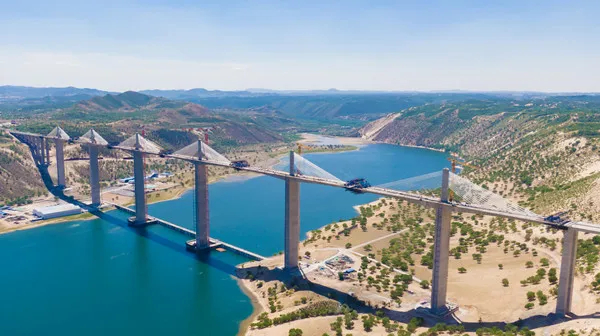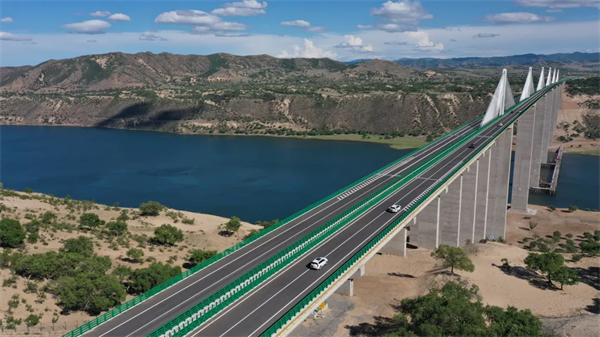New bridge in Inner Mongolia sets world record

Standing tall: A panoramic view of the Sharmoron Bridge. [Photo/Benteng Integrated Media]
In a testament to China's renowned prowess in building infrastructure, North China's Inner Mongolia autonomous region recently added a new feather to its cap with the inauguration of the Sharmoron Bridge.
This monumental structure, located within the Hexigten Banner of Chifeng city, marks yet another world record for the region.
It's the world's first bridge constructed in an aeolian sand canyon area and currently the highest and longest PC beam multi-low tower cable-stayed bridge globally. The entire project came with a price tag of 904 million yuan ($128.77 million).
Overall, the bridge is deemed to be an integral part of the Jingpeng-Ulan Butong Expressway and spans a whopping 2,064 meters.
Its main bridge features six cable towers, each standing 38 meters tall, with a total height from tower base to beam reaching 210 m.
The bridge traverses the fragile ecological zones of the Hunshandake Sandy Land, a key area of the local Hongshan Culture.
The surface layer of the aeolian sand along the riverbanks reaches depths of up to 60 m, with slopes ranging between 30 degrees and 40 degrees.
The challenging terrain, characterized by significant elevation differences and poor self-stabilization, required all the bridge piles to be placed deeply within the thick aeolian sand layers.

Vehicles stream across the newly opened Sharmoron Bridge. [Photo/Benteng Integrated Media]
The construction reportedly faced considerable difficulties in building access roads and drilling platforms – compounded by the high-temperature fluctuations and frequent strong winds in the U-shaped canyon, which increased the risk of concrete cracking and posed high safety risks.
With the bridge now open to traffic, the travel time between key points in the region has been halved. The journey from Jingpeng to Ulan Butong, which previously took two and a half hours, can now be completed in under an hour.
This project not only connects Inner Mongolia with the Bohai Sea Economic Rim, but also serves as a crucial maritime access route and a premium tourist highway for the central region of Inner Mongolia.
It is expected to play a significant role in enhancing the road network layout of central Inner Mongolia, supporting the Belt and Road Initiative's northern opening and western development strategies. Moreover, it's anticipated that it will spur resource development and economic and social development along its path.



 Print
Print Mail
Mail





